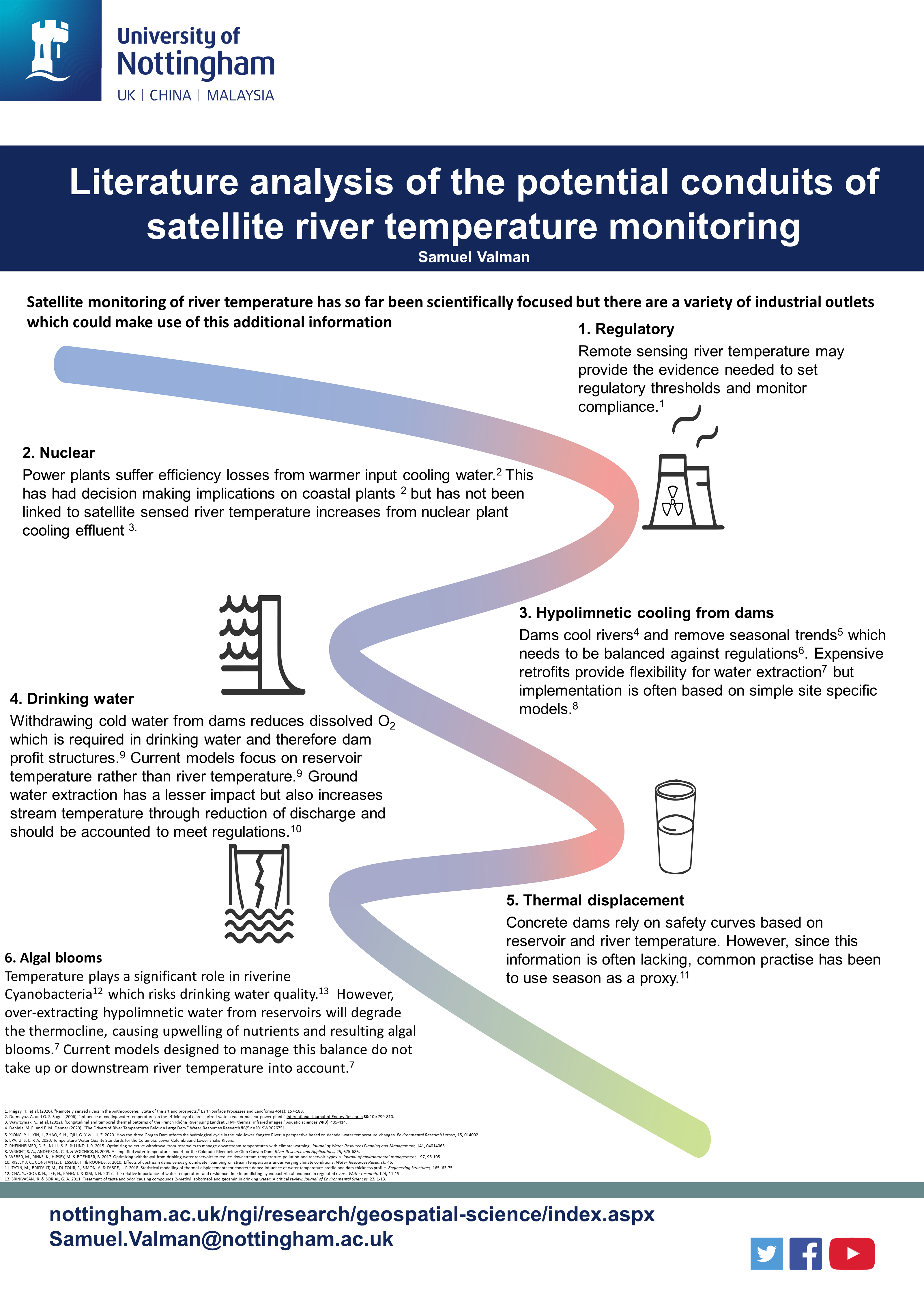About Me
I’m part of the second EPSRC funded Geospatial Systems PhD cohort based at the University of Nottingham and twinned with Newcastle University. My focus is on satellite remote sensing of freshwater river systems especially in regards to thermal infrared sensors. However, the research focus is currently being broadened towards an understanding of what river characteristics can be measured from earth observation and how these can be collated into an actionable digital twin.
I am also using Sentinel 2 and Planet-Imagery optical satellite imagery in a research assistant role for the University of Nottingham Rights Lab to monitor modern day slavery from space. With the goal of providing information and anlysis for organisations on the ground.
I graduated from the University of Nottingham with a BSc (Hons) in Geography in 2018 and gained a Distinction in a MSc (By Research) in 2019, also from the University of Nottingham. In both of these my focus was on Hydrogeomorphology of riverine systems. I had concurrently been a research assistant working on visualising and testing channel change models, Blue-Green infastructure, and Stage Zero Floodplain reconnection.
PhD summary
Title: Satellite remote sensing of river temperature for application in dam and powerplant operating procedures Supervisors: Dr. Stephen Dugdale and Professor. Doreen Boyd
Research Summary The Centre of Docturnal training provides a Masters of Research and a PhD in a combined four year course. During the first year of this course I have been developing the programming skills I possess (Python, SQL, R and HTML), applying these to GIS systems, and Remote Sensing applications. The CDT has provided plenty of opportunities to enhance skills in presenting, academic posters and provides a strong launching pad for the rest of my PhD.
My research is focused on using medium grain Thermal Infared Satellite Remote Sensing to understand changes in stream temperature. Dam and powerplants rely heavily on river temperature models to meet regulatory standards, maintain efficiency, combat climate change and reduce environmental impacts. However, most of these models rely on seasonal proxies or extrapolate results from a few in-situ sensors. Therefore, it is our intention to use satellite remote sensing to plug this data gap and in the process understand inefficiencies in the system. To do this will require processing in Google Earth Eninge using the Python API.

